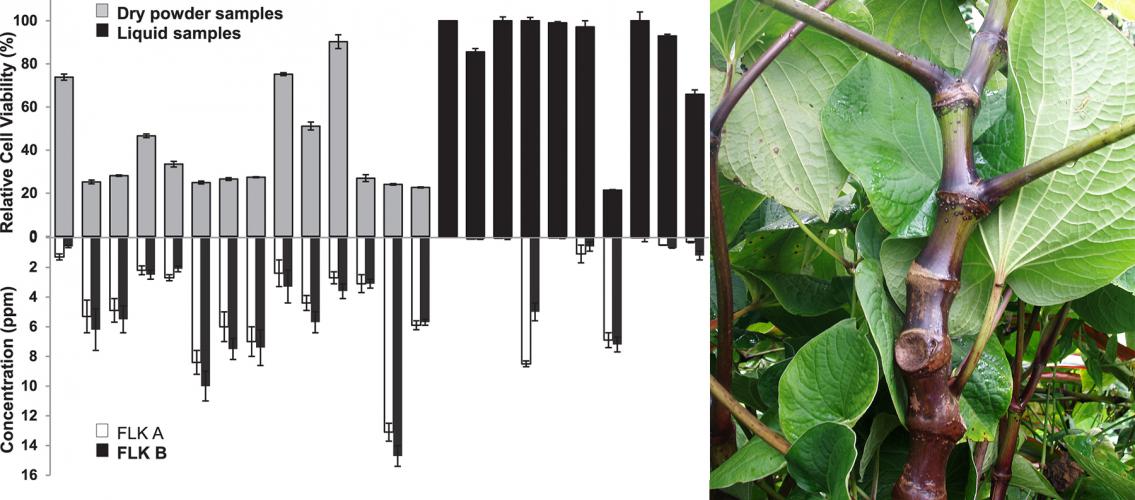
For centuries, Pacific Islanders have used the kava (Piper methysticum G. Forster) plant to make water-based drinks for medicinal and ceremonial use. Kava, prepared with water, is also traditionally used as a daily drinking beverage at the end a workday similar to a cocktail. Because of reports that linked solvent (e.g. ethanol, acetone) extracted kava use to liver damage, in the early 2000s governments in the European Union, Canada, Australia, and the U.S. have either banned its import or have issued consumer advisories. In spite of this, kava use as an alternative medicine continues, and export data show that consumption is even increasing. Some earlier studies have indicated that kava may have some properties as a cancer preventative. However, not only are there different classes and varieties of kava cultivars, differences in the preparation of kava drinks results in considerable variations in the amount of compounds in the drinks.
Two MSI Principal Investigators, Associate Professor Adrian D. Hegeman (Horticultural Science; College of Food, Agricultural, and Natural Resource Sciences) and Professor Chengguo Xing (Medicinal Chemistry; College of Pharmacy), are authors on a recent paper in PLoS One that measured variations in cellular toxicity (cytotoxicity) and chemical composition in several different commercially available kava products. The lead author, Amanda C. Martin, recently graduated from Professor Hegeman’s MSI research group. The researchers used metabolomics to study the compounds in kava and to assess their potential as cancer preventatives. They also studied six compounds that may be associated with medicinal or negative cytotoxic effects of kava. Results showed that not only is there wide variability in chemical composition and cytotoxicity among commercial kava drinks, the possible benefits of kava as a cancer preventative indicate that it should be studied further. The paper can be found on the PLoS One website. (Amanda C. Martin, Ed Johnston, Chengguo Xing, and Adrian D. Hegeman. 2014. Measuring the chemical and cytotoxic variability of commercially available kava (Piper methysticum G. Forster). PloS One 9, (11) (NOV 03), 10.1371/journal.pone.0111572.)
Image description: Left: Comparison of relative cell viability to flavokawain (FLK) A and B concentrations. Top: Relative cell viability of human lung adenocarcinoma A549 cancer cell line after 48-hour incubation with kava extracts in ethanol solvent at 75 mg/mL. Samples are organized from coarse grind on the left to very fine grind on the right with the last three dry powder samples (P, Z, and V) being instant freeze-dried kava. Black bars represent liquid samples. Bottom: Concentration of two potentially cytotoxic compounds found in kava (white bars: FLKA and black bars: FLKB). Error bars represent standard error of 3-4 replicates. Image and description are from Martin, AC, et al., PloS One 9(11), 10.1371/journal.pone.0111572. Right: The Hawaiian ‘awa cultivar ‘Awa Papa ‘Ele’ele (photo courtesy Ed Johnson).
posted on February 18, 2015